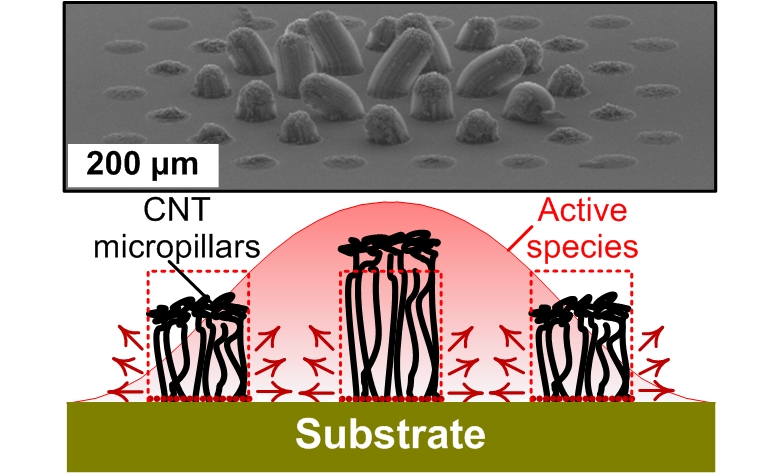
Year
2014Volume
8Issue
6Pages
5799–5812Abstract
Control of the uniformity of vertically aligned carbon nanotube structures (CNT “forests”), in terms of both geometry and nanoscale morphology (density, diameter, and alignment), is crucial for applications. Many studies report complex and sometimes unexplained spatial variations of the height of macroscopic CNT forests, as well as variations among micropillars grown from lithographically patterned catalyst arrays. We present a model for chemically coupled CNT growth, which describes the origins of synergetic growth effects among CNT micropillars in proximity. Via this model, we propose that growth of CNTs is locally enhanced by active species that are catalytically produced at the substrate-bound nanoparticles. The local concentration of these active species modulates the growth rate of CNTs, in a spatially dependent manner driven by diffusion and local generation/consumption at the catalyst sites. Through experiments and numerical simulations, we study how the uniformity of CNT micropillars can be influenced by their size and spacing within arrays and predict the widely observed abrupt transition between tangled and vertical CNT growth by assigning a threshold concentration of active species. This mathematical framework enables predictive modeling of spatially dependent CNT growth, as well as design of catalyst patterns to achieve engineered uniformity.






